Your Current Succession Planning May Be Hurting Your Organization
Job descriptions that are cliché-filled, vague, and worse than résumés. Job descriptions that merely have a long list of experience and qualifications requirements, vague wordings that can be easily misunderstood, and generic skills that appear for all roles are some of the biggest pitfalls in succession planning. What is worse is that job descriptions are outdated, do not capture future-oriented competencies, and are designed centered around the incumbent rather than the job itself.
Intuition and bias take the driver’s seat. People are inherently good, but we can be blinded by our bias, leading to subjective decisions that can have a detrimental impact on the organization. There may be over-reliance on “who you know” to select the next successor, which leaves organizations overlooking the hidden gems who could otherwise be a better candidate. We still see many companies putting the faith of their succession planning into the hands of manager ratings only.
You have data everywhere but not fully utilized. Many companies have data sitting around in spreadsheets or specific systems but most of which do not “talk to each other”. As a result, companies are trapped in having too much siloed information which they struggle to derive meaningful insights to drive their succession planning outcomes. Data consolidation and data quality become the barrier that stops companies from having the visibility of their talents and making the right investment into the right talents.
A Talent Intelligence Platform For Succession Planning

Succession planning has always been an attempt by organizations to ensure business continuity. Before COVID-19, business and technological forces already necessitated organizations to manage change and make decisions more quickly than ever before, including talent decisions. The pandemic has made this even more prominent.
Now, more than ever, organizations need to review their talent management and succession planning strategies. Organizations that do not respond fast enough risk being at a significant disadvantage in the post-pandemic world as well. While organizations have long recognized to varying degrees the importance of having a succession plan for the business-critical roles, the challenges that come in the way of succession planning are more pronounced in 2021 and beyond.
Transforming jobs and success profiles. While technologies have brought many organizational gains, jobs are increasingly impacted over the last decade. We see organizations constantly “sunsetting” jobs, creating jobs, and jobs being augmented. HR faces the challenge of putting in place dynamic succession planning processes around this change.
Evolving work policies and practices. Work policies such as work from home are now adopted by many companies. This calls for performance frameworks to be re-evaluated and measuring this in the “new normal of work” as part of succession planning is the need of the hour. That said, talent availability has also become easier. However, how can HR find the best fit from the widened pool of available successors?
Shortening skills shelf life. Innovation will make skills obsolete faster. As jobs go extinct, augmented, or are created faster than ever before, organizations perennially find themselves needing employees with newer skills to strengthen the muscles of the business. HR will now have to shift its focus to building succession planning pipelines that are based on skills of the future, with non-traditional benchmarks.

Your Game Changer To A Future-Ready Organization
A Talent Intelligence Platform can be the right enabler for organizations who are making the shift to a new way of running succession planning. The underlying engine of a Talent Intelligence Platform is artificial intelligence to help organizations understand their talents better and make faster, better quality decisions. It can:
- Handle huge amount of data that flows from different systems
- Consolidate data from multiple sources to have an integrated view of talents
- Produce real-time predictive analysis and insights to enable decision making
- Enable talent matching based on potential with system recommendations
- Create a positive experience with seamless workflows
With Talent Intelligence Platform, organizations can increase HR efficiency and agility, proactively address talent and capability gaps to remain competitive, continuously nurturing talents to future proof the organization, and achieve greater diversity in the leadership pipeline.
Selecting The Right Talent Intelligence Platform

After understanding why you may need a Talent Intelligence platform for your succession planning needs and knowing what your different internal stakeholders are looking for, the challenge now moves selecting the right Talent Intelligence platform. Often, selecting the right platform is the toughest part for HR because of all the options available in the market today.
Surveys also show that Talent Acquisition and Talent Management Heads in Fortune 500 companies are on average approached by 10 vendors per day attempting to sell different solutions. In this section, we address key questions to ask potential vendors about their capabilities as well as queries on their platform’s succession planning module.
Key Questions - Regarding Vendor Capabilities

Level Of Integration Ease
One key benefit of having a Talent Intelligence platform is the ability to integrate all talent data into a single platform. This gives HR a single unified place in which all decision-making data can be found. HR teams, therefore, do not need to spend time going into multiple systems to find the information they need, and making connections between related data points becomes easier.
It is therefore important to understand the amount of integration your potential vendor is willing to allow, integration partners they may already have, if any current systems within your HCM architecture may block this integration, and potential added cost for integration.

Security Measures In Place
As the gatekeepers of employee information, HR teams need to ensure potential vendors have proper security/data measures. With a growing number of systems in companies, 68% of business leaders feel their cybersecurity risks are increasing (Accenture, The Cost Of Cybercrime).
Security measures of vendors should therefore be looked at in 2 ways:
- Look for data security evidence such as certifications and accreditations and ensure GDPR compliance in place.
- Access controls need to be flexible and easily customizable to ensure only the right people in the organization can access the right information needed.

Approach To Customization
The majority of systems HR teams buy today will need to be customized to suit your requirements and processes to avoid redundant work and time wastage. This may include customizing a certain workflow, reports and dashboards, communication templates, and branding. As a buyer, you will typically come across 3 different approaches vendors in the market takes to customization.
Firstly, you may come across some vendors who are not open to customization therefore their product/service/ platform will come as-is. Typically, these are vendors who aren’t on a SaaS/Cloud model and therefore any product changes will either incur an expensive internal cost or may impact the architecture of the product overall. If this is a vendor in your selection options, you will need to ensure the product currently fits your entire HCM architecture, processes, and workflow.
Secondly, you may also find vendors who are open to most customizations with a charge attached to each change. In this case, it is important to narrow down exactly which part of the product needs changes and ensure each change is scoped, agreed, and documented pre-purchase to avoid additional charges later.
Lastly, you will find buyers, especially in the cloud space today who offer certain pre-determined changes for free and will scope charges for additional customization according to work effort. These vendors are typically the best to deal with when considering customization because low effort changes such as basic branding often come free and charged customization is transparent and can be negotiated therefore benefiting the buyer and your budgets.
Key Questions - Regarding Succession Planning Module

Multiple Assessment Options
A key reason to use a Talent Intelligence platform for succession planning is to eliminate bias and introduce objective decision-making. This is why your selected platform must have multiple assessment tools available to give you clear talent visibility. Typically, the data you would already have available leans towards performance and can include some elements of subjectivity.
By using a combination of assessment tools, you can understand employee’s potential, which is crucial for effective succession planning. Additionally, having multiple assessment tools allows your organization to tailor different sets of assessments to varying job levels. Ideally, choose a platform that has a range of tools available such as psychometrics, game-based, 360 feedbacks and more.

Validated Success Profiles
To conduct effective succession planning HR teams first need to understand what good looks like for a role. This perhaps could easily be done if HR focused on 1 or 2 roles, but, this is a challenge as they are expected to know much more roles and ideally, every role in the organization. This is where the importance of built-in success profiles in the talent intelligence platform comes in.
These success profiles must cover areas such as technical skills, leadership competencies, proficiency and importance levels, and additionally rating guidance, development tips, and interview questions. Also, it is important to find out if these success profiles have been validated and against what level of benchmarks.

Predictive Fit Scores
To reduce the effort HR teams, spend on analyzing what assessment results mean to an employee’s success plan potential, look for predictive role-fit scores when choosing a platform. Talent Intelligence platforms should come with backend algorithms that analyze performance and potential data to tell HR exactly how ready an employee is to move into their next role.
Predictive fit scores also allow HR to plan for lateral and horizontal moves as these algorithms can allow for matching an employee to any role/project/gig that is available in the organization. This feature not only helps you reduce attrition rates but also helps build a pipeline of talent for any role in the organization.

Targeted Development Plans
To ensure effective development and ROI on learning spend, look for a platform that provides targeted individual learning plans based on individual employees’ talent profiles. Development efforts are often seen as not effective when they are not personalized or targeted because the impact of a generic program is often null and sometimes can lower engagement rates.
As opposed to that, when learning’s are based on an employee’s actual leadership or technical gaps, they are intrinsically motivated to close those gaps and therefore are engaged in the development process. Targeted development also speeds up the time needed for an employee to be ready for their next role/project/gig therefore further strengthen leadership pipelines.
To create an experience which is seamless and engaging, search for a platform that can integrate or is already integrated with learning management systems. This way, succession planning end-to-end is all done on a single platform.
What Stakeholders Want In A Talent Intelligence Platform

Chief Executive Officer
People are valuable assets of any organization – hence the chief executive will want to always be in tune with the performance, capabilities, or even red flags of the workforce, especially the key talents. Having the talent snapshot at their fingertips helps chief executives to ensure investments are channeled into nurturing the right talents for the business and able to proactively address any talent risks. Real-time access to the latest information on the talent pool and gap will be crucial for the chief executives to make key decisions and preparation on demand.

Chief Finance Officer
Top priorities for a chief financial officer (CFO) includes accuracy of data, quality and flexibility of reporting, and the financial impact of using a new platform for talent management and succession planning. CFO will be interested in opportunities for efficiency savings and cost reduction to justify the investment in a talent intelligence platform. Data storage, protection, access, and usage also concern the CFO as the risk of employee data breaches may lead to penalties if the organization is found to have been negligent.

IT Teams
In the IT department will naturally want to examine any software that you are considering bringing onboard and evaluate how it fits into the current ecosystems. Given the cloud-based systems are increasingly the norm, key concerns in their mind will be around cybersecurity, system integration and the amount of IT resources needed for implementations the organization makes the move to a talent intelligence platform. If your company has made large investments in existing systems but are underutilized, IT members will be keen to understand the value of the new investment.

Line Managers
Most line managers tend to be occupied with their busy schedules, so having controlled access to employee information can be a great aid for them to pull out information as and when needed without having to go through the hassle of multiple layers of requests. Line managers will appreciate the convenience of the platform in terms of giving them the ability to look up talent profiles in a matter of a few clicks that would help to prepare them for any conversations with their employees. Having real-time visibility into their talents also will be helpful for managers to know when they should intervene or provide more guidance.

HR Teams
HR today is more than just employee housekeeping. For that reason, HR members will pay particular attention to the capabilities of streamlining routine tasks, automating workflows, distilling important insights through in-depth analytics, and empowering employees to take charge. This would then al low HR to spend more time serving the strategic needs of the organization. HR will need a system that can enable them to do more with less to lower talent costs, reduce turnover and increase retention among the other priorities. A platform that can break down the silos within the HR team and stay connected to other parts of the business to achieve the enterprise needs is also a key concern.

Employees
Employee experience is at the forefront of HR’s minds today. When evaluating a Talent Intelligence Platform, keep in mind how employees can securely access and easily update their profiles and skills, identify gaps and development plans, as well as keep track of their learnings. It is also value-adding for employees to see their profile match to different roles based on capabilities and visualize opportunities for them to grow within the organization.
A Talent Intelligence Platform Is An Urgent Need
You cannot win the talent competitive advantage by subjective decisions, unclear job profiles, inaccurate talent decisions, and long talent cycles. With that, a Talent Intelligence Platform is needed to ensure that your succession planning is up to speed with business changes, agile to adjust to business changes, ensuring a strong leadership pipeline and a solid bench-strength.
Authored By

Ash is the Head of Market Insights at Accendo Technologies. After over 7 years of working with clients, he is now dedicated to sharing industry knowledge and research. He does the important work of producing market insights, HR articles, industry trends and connecting the HR community in ASEAN.
Sue Mun is a Senior Analyst in Accendo with a background in psychology. She is always curious about what drives people’s behaviors and decisions. Over the years, she has been working closely with clients and is now dedicated to working on strategic projects to deliver exponential value to organizations



